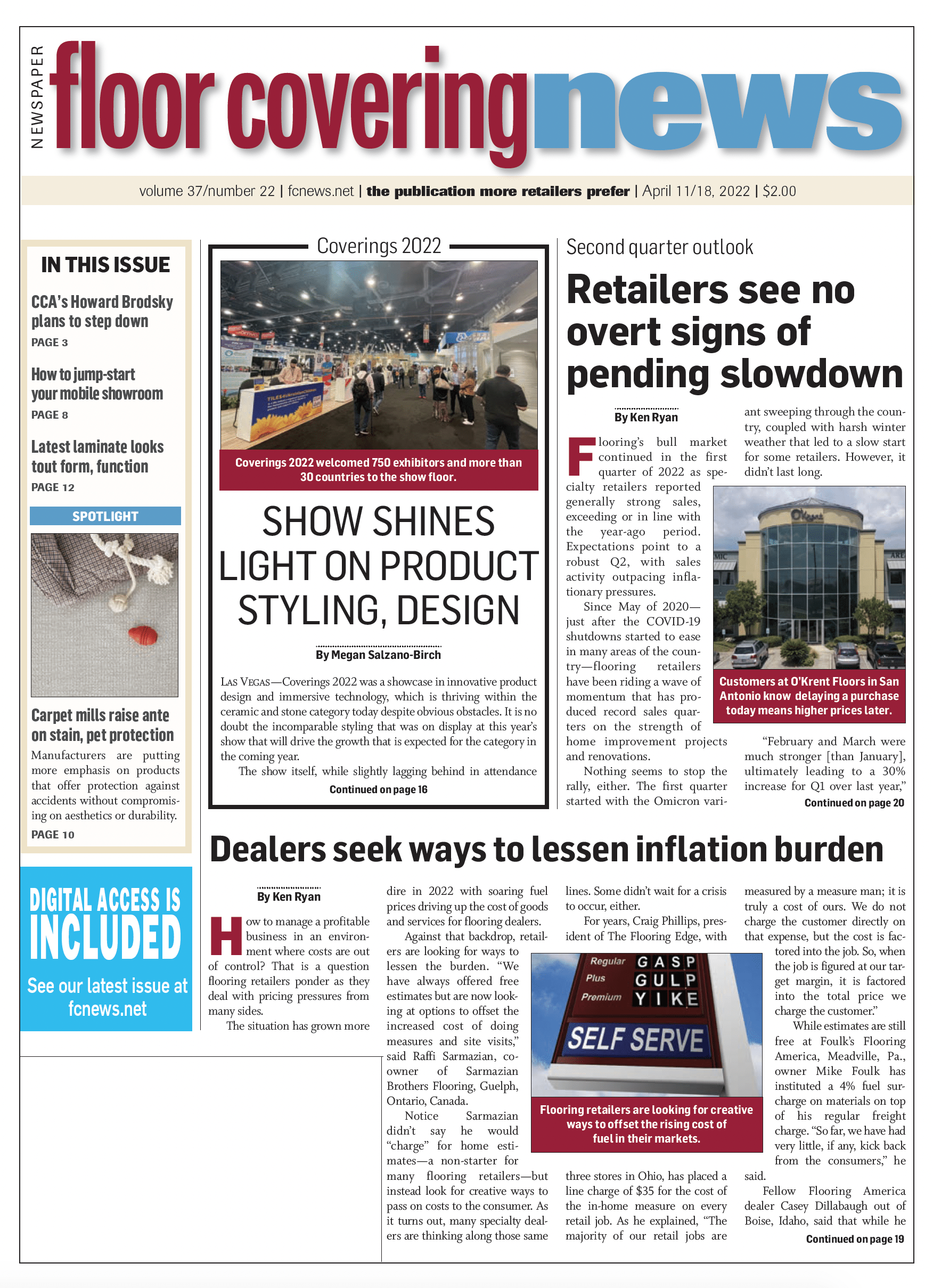 Rather than write about topics dominating the news these days ad nauseum—specifically escalating prices on everything from energy to eggs—I thought it would be refreshing to dial it back a notch. A report on design trends recently found its way into my inbox, which I found to be somewhat interesting.
Rather than write about topics dominating the news these days ad nauseum—specifically escalating prices on everything from energy to eggs—I thought it would be refreshing to dial it back a notch. A report on design trends recently found its way into my inbox, which I found to be somewhat interesting.
The document to which I’m refer- ring is the American Society of Interior Designers’ (ASID) 2022 Trends Report, the first of a three-part series revealing significant industry trends and implications, economic indicators and shifts in the interior design profession. The report is designed to deliver insights to guide the profession through the next era of pandemic design.
The ASID Trends Report examines topics that inform design practice developments, such as demographic shifts leading to new consumer and/or employee needs and lifestyle trends based on their priorities. The report connects these ideas to the profession, offering designers a comprehensive perspective on the year ahead.
Probably the biggest takeaway was that health and wellness continue to dominate both residential and commercial design due to the lasting effects of the pandemic. Sustainability has also shifted from a “nice-to-have” to a “must-have” for designers and consumers/homeowners.
Here are some of the highlights:
- Wellness is a top priority for homeowners. About 53 million adult Americans and roughly 7.7 million youths experienced some form of mental illness in 2020. Due to this phenomenon, homeowners are increasingly searching for designs and products that will promote good health and an overall sense of well-being. Consumers are gravitating toward simpler, cleaner, easier-to-maintain designs as well as outdoor living spaces and places where they can relax from the stress of everyday life.
- Workplace wellness is a must for employees and businesses. Nearly a third of the full-time employees currently working from home say they would never come into the office during the week. That’s a big deal. I say there are two choices: fire their butts or lure them back to the workplace by providing environments that are clean and safe, but also less stressful.
- U.S. population growth has stalled. Between 2010 and 2020, the nation’s population growth increased only 7.4%, the slowest growth rate since the Great Depression. The dip is part of a longer-term trend tied to the aging of the country’s white population, decreased fertility rates and lagging immigration.
- Smart home technology, such as lighting systems, carbon monoxide detectors and digital thermostats have grown in popularity as they become easier to use (voice-activated devices). Most homes now have at least one or two smart items, and it is projected that by 2023 more than half will have three or more.
The report also details industry insights impacting all sectors of design, highlighting health and wellness, technology and business trends.
Here are some findings:
- The future of office design is evolving. As employees’ attitudes toward work are changing, employers and designers are trying to figure out what the office of the future should look like. Emerging trends include allowing more freedom and flexibility for employees to design their own spaces, creating experience-based environments, the return of the private office and providing more spaces that support team and interactive activities.
- Hotels and resorts look to refresh and renew their interiors as they await the return of guests. Those in the hospitality industry are refreshing their properties to improve com- fort and safety and to update aesthetics. Some current trends include replacing select textiles and wood with porcelain, glass and composite materials. Statistically, wellness tourism is projected to generate $436 billion in 2022.
- In a tight job market, employees are demanding higher salaries and more benefits. Firms are having a difficult time hiring with open positions far outstripping qualified candidates. Looking ahead, this trend is likely to continue as so many companies indicated their primary staffing issue would be finding candidates.
It’s obvious that COVID-19 has forever altered attitudes toward work and design. Not saying in a good or bad way, but things are a changin.’

